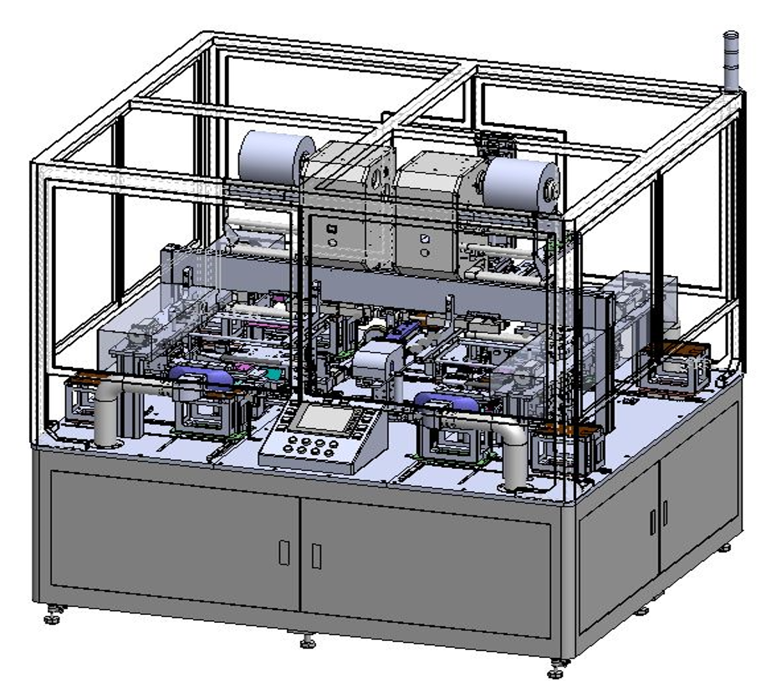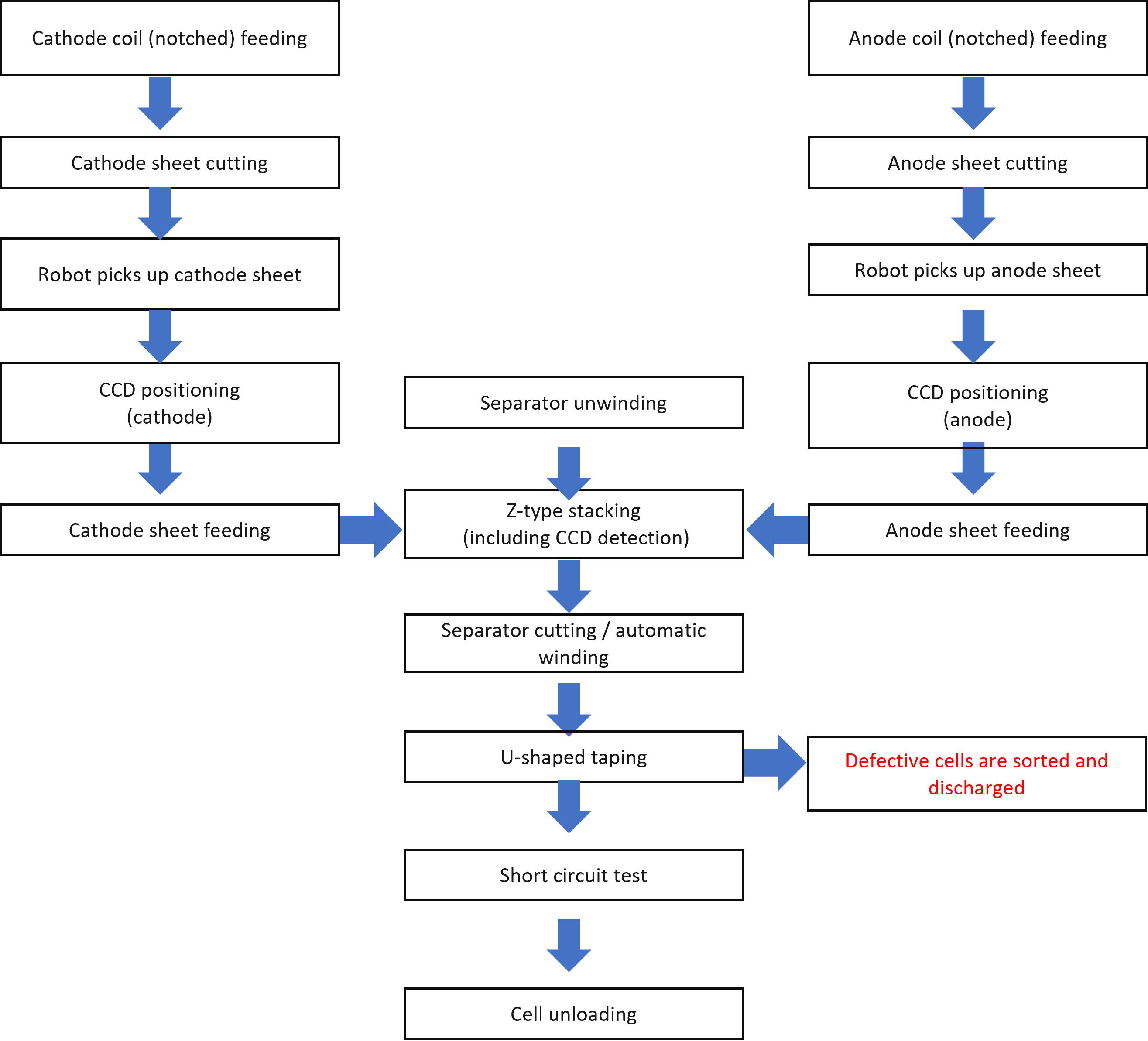The equipment is used for Z-shaped lamination of positive and negative electrode sheets of lithium ion battery cells, U-shaped glue sticking on cells, short-circuit testing, cell blanking and other functions.
Electrode Preparation:
Before stacking, individual electrode layers are prepared. This involves coating or depositing active materials onto current collectors, which could be conductive substrates like metal foils. These active materials are chosen based on the type of electrochemical device and the desired electrochemical reactions.
Separator Integration:
Separators, which are typically ion-conductive membranes or materials, are often placed between adjacent electrode layers. Separators prevent electrical short circuits between electrodes while allowing ions to pass through. In solid-state devices like solid oxide fuel cells (SOFCs), separators could be solid electrolytes.
Electrode Stacking:
Once the electrodes and separators are prepared, they are stacked in a specific order to form a layered structure. The order of stacking depends on the type of device and the intended electrochemical reactions. For example, in a lithium-ion battery, the typical order could be: cathode - separator - anode.
Electrode Alignment:
Proper alignment of electrodes and separators is crucial to ensure optimal electrochemical performance. Misalignment could lead to uneven distribution of reactants, reduced efficiency, or even short circuits.
Sealing:
In devices that require containment of reactants and products, the stacked layers are often sealed around the edges to prevent leakage. This sealing process ensures that the electrochemical reactions occur within the designated areas.

If you have any questions or need more information, please contact us through the inquiry form.
Contact Here